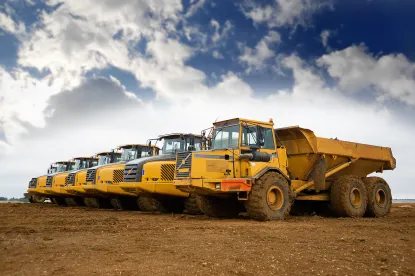We are continuing to follow regulatory developments proposed for the heavy-duty vehicle and engine sector. In our most recent blog post on the topic, we covered updates on timing for the United States Environmental Protection Agency (US EPA) Cleaner Trucks Initiative and the California Air Resources Board’s (CARB) efforts related to Heavy-Duty Low NOx Omnibus rulemaking and the Advanced Clean Trucks Initiative. In the past few months, additional progress has been made and both agencies have outlined paths regarding timing. A summary of such updates and an overview is provided in this post, including a deadline of August 25, 2020 to provide written comments on CARB’s Proposed Heavy-Duty Engine and Vehicle Omnibus Regulation and Associated Amendments.
US EPA Regulations and Guidance
In the 2020 Spring Unified Agenda of Regulatory and Deregulatory Actions, US EPA provided an estimated date of September 2020 for issuance of the Notice of Proposed Rulemaking (NPRM) for the control of air pollution from heavy-duty engines (also referred to as the Cleaner Trucks Initiative (CTI)) and an estimate date of July 2021 for the issuance of a final rule Despite this timeline, the timing of the NPRM could be delayed due to the election. The Unified Agenda also revealed that the agency may issue an advanced notice of proposed rulemaking (ANPRM) in June 2021 for the reconsideration of fuel efficiency and greenhouse gas (GHG) standards for medium and heavy-duty on-highway vehicles and trucks. The status is categorized as a long-term action.
Existing US EPA enforcement discretion related to the coronavirus pandemic is set to expire on August 31, 2020. Susan Bodine, the Assistant Administrator for EPA’s Office of Enforcement and Compliance announced the termination date in a memorandum on June 29, 2020 in recognition of the changing circumstances, including efforts to return to normal operations in parts of the country. However, despite the timeline of this guidance, manufacturers in the engine space continue to face challenges meeting obligations related to certification and compliance – including the submittal of critical carryover documentation and scheduling of testing facilities.
In recognition of these challenges, the US EPA Office of Transportation and Air Quality proceeded, as of July 13, 2020, to issue guidance specific to heavy-duty compression-ignition highway engine, heavy-duty highway vehicle, nonroad compression-ignition engine, and marine compression-ignition manufacturers. While this guidance provides suggestions manufacturers can take, it should be qualified that the guidance is still non-binding and the agency cautions that “[n]othing in this letter changes any regulatory requirement and manufacturers should plan to complete all required testing and reporting as soon as circumstances allow.”
Specifically, the guidance addresses what to do in the cases of difficulties related to certification and compliance. Manufacturers experiencing delays are directed to submit data even if incomplete and provide a detailed request for the need for flexibility along with a proposal for how to comply with regulatory requirements. The agency also indicated that it will work with manufacturers affected by facility or laboratory closures, testing limitations, and resources required for voluntary recall agreements.
CARB Heavy-Duty Engine and Vehicle Omnibus Regulation and Associated Amendments
CARB issued a Notice of Public Hearing on June 23, 2020 to consider the Proposed Heavy-Duty Engine and Vehicle Omnibus Regulation and Associated Amendments. The primary target of the proposed regulation includes engines intended for use in medium-duty vehicles between 10,001 to 14,000 pounds and heavy-duty vehicles greater than 14,000 pounds. The hearing is scheduled for August 27, 2020, and interested members of the public may present comments at the hearing (orally and in writing). The public comment period began on June 26, 2020, and written comments not submitted at the hearing must be received no later than August 25, 2020.
After the hearing, CARB will make the determination whether or not to finalize the proposed amendments to the exhaust emissions standards and test procedures for 2024 and subsequent model year diagnostic system requirements, heavy-duty in-use testing program, etc. If CARB approves for adoption the amendments, then the full regulatory text will be made available to the public, for written comment, at least 15 days prior to final adoption.
The regulation, if approved, would reduce NOx exhaust emission standards for applicable medium-duty and heavy-duty diesel engines to 0.05 g/bhp-hr for MY 2024-2026 and 0.02 g/bhp-hr for MY 2027 and later engines. The current standard is 0.20 g/bhp-hr with optional low-NOx standards available. CARB also sets forth a proposed low load cycle with a limit of 0.2 g/bhp-hr for MY 2024-2026 and 0.05 g/bhp-hr for MY 2027 and later engines.
CARB recognizes that emissions also source from trucks traveling into California and provides a less stringent optional 50-state-directed emission standards for MY 2024 through 2026. Manufacturers following these standards for a given model year would choose to optionally certify all new 50-state directed diesel engines to the standards provided by California. For vehicles greater than 14,000 lbs, for example, this would include 0.10 g/bhp-hr for NOx. For context, the applicable federal standard is 0.20 g/bhp-hr for NOx. CARB reiterates in its notice that it intends to coordinate regulatory efforts with US EPA though it is worth noting based on the timeline that CARB’s rule will likely be finalized and approved prior to the issuance of US EPA’s notice of proposed rulemaking.
CARB Advanced Clean Truck Regulation
CARB approved the Advanced Clean Truck regulations on June 25, 2020, explaining that COVID-19 was not a basis for delay. The goal of the regulation is to increase the amount of zero-emission trucks, streamline reporting, and establish a pathway to carbon neutrality by 2045. CARB explained in its public hearing that it expects the changes to provide for reduction of 27.9 tpd of NOx and 0.85 tpd of PM2.5 through 2040. The rule, as summarized in a prior post, will require manufacturers who certify Class 2b-8 chassis or complete vehicles with combustion engines to sell a certain number of zero-emission vehicles across all vehicle groups beginning in MY 2024. This will include manufacturers that certify on-road vehicles over 8,500 lbs gross vehicle weight rating (“GVWR”).
Large entities, such as retailers, manufacturers, and brokers, will also be required to report about existing fleet operations in 2021, and complete information is required to be reported by April 1, 2021. Large entities are defined within the regulation, and generally include fleet owners with 50 or more vehicles as well as entities with gross annual revenues greater than $50 million that meet certain qualifications. The purpose of the reporting is to provide CARB with information to assist with future strategies for accelerating the ZEV market in the state.




 />i
/>i

